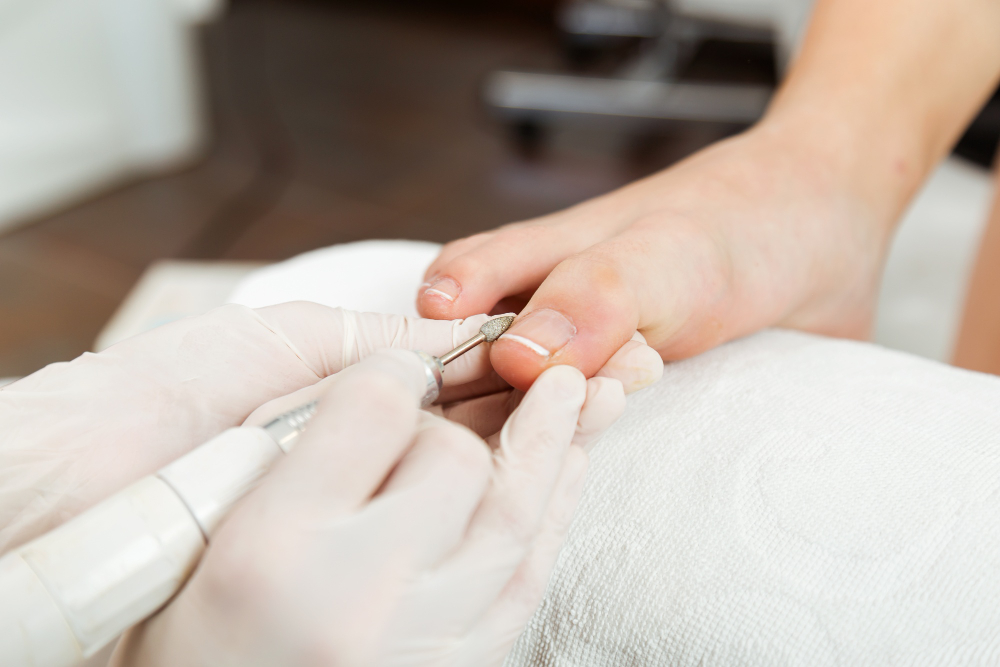Have you ever noticed how your fingernails seem to grow quickly, while your toenails take what feels like forever to grow out? Whether you are waiting for a broken nail to recover or trimming your toes less often than your hands, there’s a clear difference in growth speed. But why is that?
The reason lies in biology, blood flow, and lifestyle factors. In this article, we’ll explore the science behind nail growth, why toenails grow slower, and how you can encourage healthy nail development from head to toe.
How Nails Grow: The Basics
To understand why toenails grow slower, it helps to know how nails grow in the first place.
Both fingernails and toenails are made of a protein called keratin, the same material that forms your hair and outer layer of skin. Nail growth begins in a part of the finger or toe called the nail matrix, located just beneath the cuticle. Cells in the matrix multiply and harden, forming the visible nail plate that gradually pushes outward.
On average, fingernails grow about 3 millimeters per month, while toenails grow only about 1 millimeter per month. That’s a significant difference — toenails grow roughly three times slower than fingernails.
But what causes that difference? Several scientific and biological factors contribute to the slower pace of toenail growth.
The Role of Blood Circulation
One of the most important reasons toenails grow slower is reduced blood circulation in the feet compared to the hands.
Your hands are closer to the heart and are used constantly throughout the day, which keeps blood flowing efficiently. The increased circulation brings more oxygen and nutrients to the nail matrix, supporting faster cell regeneration and growth.
In contrast, the feet are farther away from the heart and generally less active, especially when confined in shoes. The reduced blood flow means the nail matrix receives fewer nutrients and less oxygen, slowing down growth.
Good circulation equals faster growth — and since your toes get less of it, they grow more slowly.
The Impact of Nail Usage and Movement
Another key factor is how often you use your hands versus your feet.
Your hands are active all day — typing, cooking, writing, gripping, and gesturing. This frequent use stimulates blood flow and nerve activity, encouraging faster nail growth. On the other hand, toes spend most of the time covered, often pressed inside shoes with limited movement.
The less stimulation your toes get, the slower their nails grow. In a way, nails are like muscles — they benefit from regular use and movement.
Evolutionary and Functional Differences
From an evolutionary standpoint, toenails and fingernails serve different functions.
Fingernails evolved primarily for fine motor skills — protecting fingertips, enhancing touch sensitivity, and aiding in gripping objects. Because of their frequent use and exposure, faster growth ensures fingernails recover quickly from wear and tear.
Toenails, on the other hand, evolved mainly for protection — shielding the toes from injury and pressure when walking or running. Since they face less daily wear compared to fingers, there’s less biological urgency for toenails to grow rapidly.
In short, nature made fingernails fast-growing because we use our hands constantly, while toenails grow slower since their primary role is durability, not dexterity.
Temperature and Environment
Temperature also plays a role in nail growth. Nails grow faster in warm conditions because heat improves blood circulation and boosts cell metabolism.
Since your hands are usually exposed and active, they stay warmer than your feet, which are often covered by socks and shoes. The cooler temperature around your toes slows down the biological processes responsible for nail growth.
This is also why nails may grow faster during summer months when your body temperature and activity levels are higher.
Nutrition and Health Factors
Your diet and overall health influence nail growth speed as well. Nails need nutrients like protein, biotin, iron, zinc, and vitamins A, C, D, and E to grow properly.
If your nutrition is unbalanced, both fingernails and toenails may grow more slowly, but toenails will show the effect more noticeably since they already have a slower growth rate.
Certain medical conditions, like thyroid disorders, circulation issues, or vitamin deficiencies, can also slow nail growth. People with poor circulation in the legs, such as those with diabetes or peripheral artery disease, may find their toenails grow particularly slowly or become brittle.
Age and Hormonal Influence
Age is another factor that affects how quickly nails grow.
In children and young adults, nails tend to grow faster because of a higher cell regeneration rate and more efficient circulation. As we age, both metabolism and blood flow slow down, which decreases nail growth speed.
Additionally, hormonal changes can influence growth. For instance, nails often grow faster during pregnancy due to increased metabolism and circulation, but may slow down during menopause or with certain hormonal imbalances.
Because toenails are already at a disadvantage due to less blood flow, the effects of aging and hormones become even more pronounced.
Footwear and External Pressure
Your shoes may also have something to do with the slower growth of toenails.
Constant pressure from tight or closed-toe shoes can restrict blood flow to the toes, further limiting oxygen and nutrient delivery to the nail matrix. This pressure can also cause minor trauma, leading to thicker, slower-growing nails over time.
People who frequently wear tight shoes or high heels may notice slower or uneven toenail growth as a result. To support healthier nails, wearing properly fitted footwear that allows for circulation and comfort is important.
Can You Make Toenails Grow Faster?
While you can’t completely change the natural growth rate of toenails, you can encourage healthy growth by supporting the conditions that help nails develop.
Here are a few practical tips:
- Improve circulation: Regular exercise, massage, or warm foot soaks can increase blood flow to the toes.
- Eat a balanced diet: Include foods rich in protein, vitamins, and minerals that support keratin production.
- Stay hydrated: Proper hydration helps maintain nail flexibility and reduces brittleness.
- Protect your feet: Wear shoes that fit well and avoid excessive pressure on the toes.
- Moisturize: Keep the cuticles and nail beds moisturized to prevent dryness and cracking.
While toenails will never match the speed of fingernails, these habits help ensure they grow strong and healthy.
When Slow Nail Growth May Be a Health Concern
In most cases, slower toenail growth is completely normal. However, a sudden or drastic change in nail growth rate, color, or texture could indicate an underlying health issue.
You should consult a doctor or podiatrist if you notice:
- Nails becoming unusually thick or brittle
- Persistent discoloration or spots under the nail
- Pain, swelling, or infection near the nail bed
- Nails growing unevenly or detaching from the nail bed
These could signal conditions like fungal infections, circulation problems, or metabolic disorders. Early diagnosis ensures proper treatment and helps maintain healthy nail growth.
Conclusion
So, why do toenails grow slower than fingernails? The answer lies in biology, blood flow, temperature, and function. Fingernails are closer to the heart, receive better circulation, and are used constantly, which stimulates faster growth. Toenails, protected inside shoes and exposed to less movement, grow more slowly due to reduced blood supply and environmental factors.
Although you can’t completely change how fast toenails grow, maintaining good circulation, nutrition, and foot care can support healthy growth. Remember, the difference in growth speed is perfectly natural — a reflection of how our bodies are designed for both function and protection.
Next time you’re trimming your toenails and realize they’ve barely grown since the last time, you’ll know exactly why nature made them that way.
FAQs
1. How much slower do toenails grow compared to fingernails?
On average, toenails grow about 1 millimeter per month, while fingernails grow around 3 millimeters per month. That means toenails grow roughly three times slower.
2. What helps toenails grow faster?
You can improve toenail growth by maintaining a balanced diet rich in protein and vitamins, improving circulation through movement, staying hydrated, and caring for your feet properly.
3. Do toenails stop growing with age?
Toenails don’t stop growing, but their growth slows with age due to reduced blood flow and slower cell regeneration.
4. Can poor circulation cause slow toenail growth?
Yes. Reduced blood circulation limits oxygen and nutrient delivery to the nail matrix, slowing growth. People with conditions like diabetes often experience this issue.
5. Why do my toenails sometimes grow unevenly or thicker?
Uneven or thickened toenails may result from constant shoe pressure, minor injuries, fungal infections, or aging. If the problem persists, consult a healthcare provider.
Also read: Biopolymer Removal Surgery: 10 Things to Know About How It Works and What to Expect (2025 Guide)




Leave a Comment